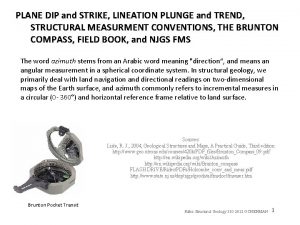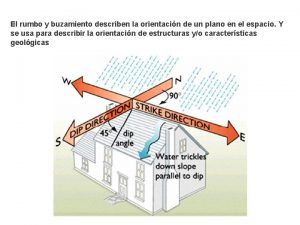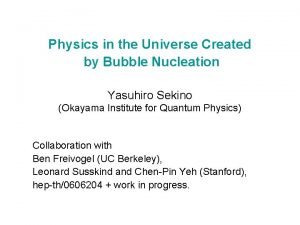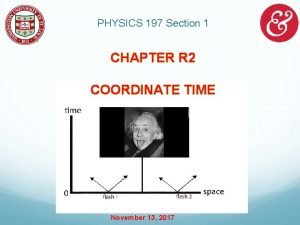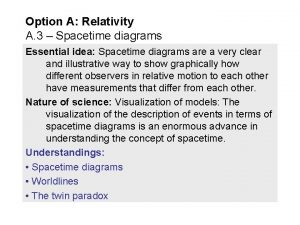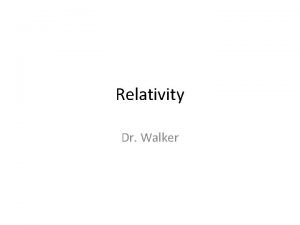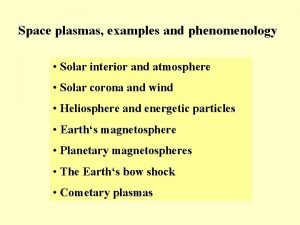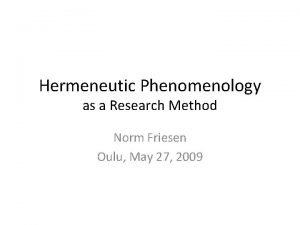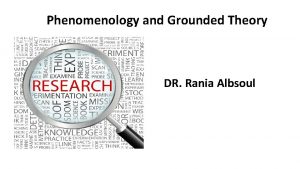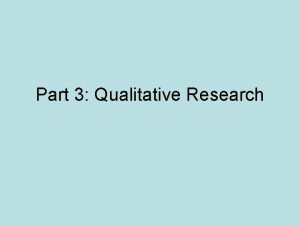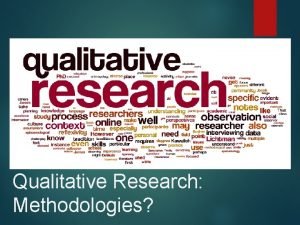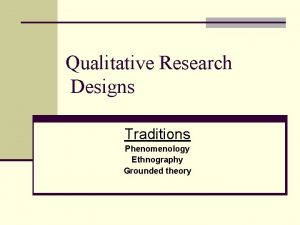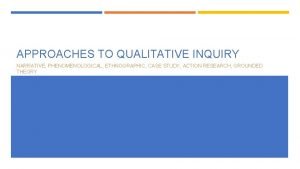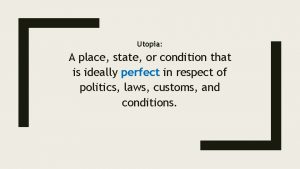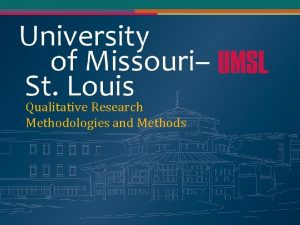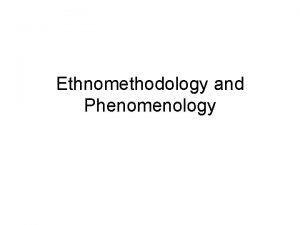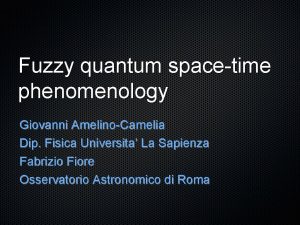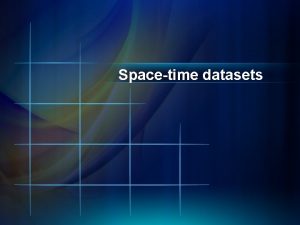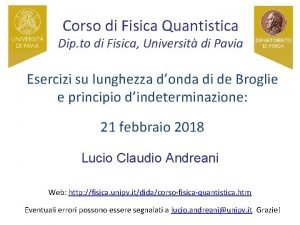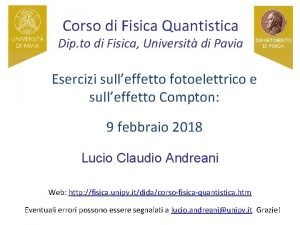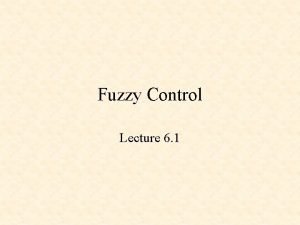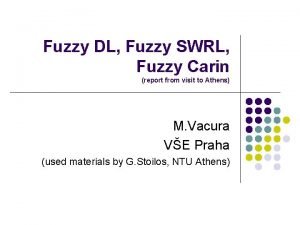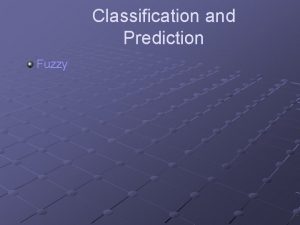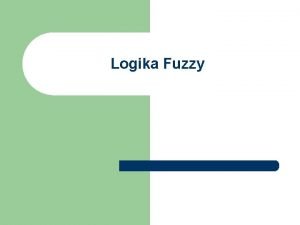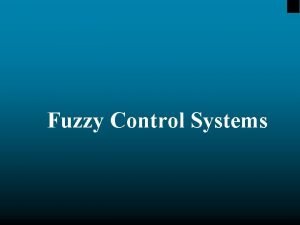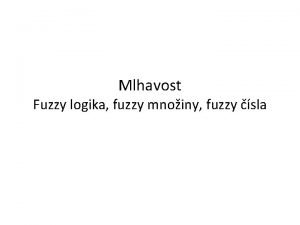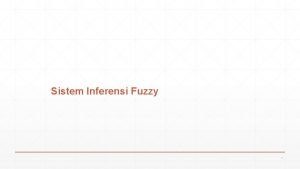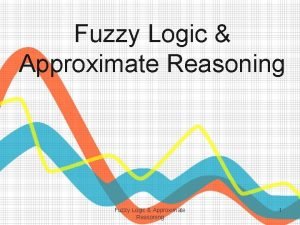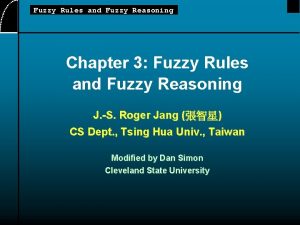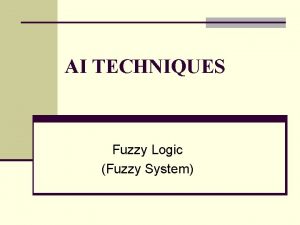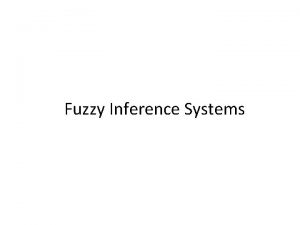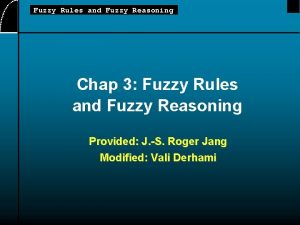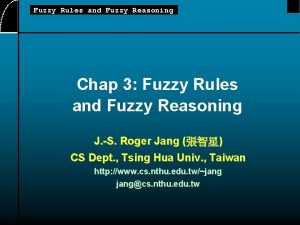Fuzzy quantum spacetime phenomenology Giovanni AmelinoCamelia Dip Fisica












![LBT AO observations of QSOs [HB 89]2048+196 z=2. 365, radio loud SDSS J 075155. LBT AO observations of QSOs [HB 89]2048+196 z=2. 365, radio loud SDSS J 075155.](https://slidetodoc.com/presentation_image_h/0b3462f5b0d1687b72950496c4ee2d97/image-13.jpg)







- Slides: 20

Fuzzy quantum space-time phenomenology Giovanni Amelino-Camelia Dip. Fisica Universita’ La Sapienza Fabrizio Fiore Osservatorio Astronomico di Roma

Summary Context High-z QSOs: QST probes? HST observations Ground based Adaptive Optic observations Constraints to QST scenarios, present and future

CONTEXT Quantum space-time problem Several formalisms No observational support so far, due to the small value of Planck length/time, despite the fact that Planck effect can cumulate when propagated on Cosmological distances/times Limits on quantum space-time effects of the order of Planck mass on some candidate QST scenarios, obtained by Fermi observations of single photons from GRBs

CONTEXT • • • Fermi limits are for systematic effect: in-vacuo dispersion of light The case of the short GRB 090510 Some issues with limits from single photons detections

CONTEXT Systematic effects of in-vacuo dispersion are found in several models for quantum-gravity/quantum-spacetime, but they are not generic Some models do not have systematic in-vacuo dispersion but still have “fuzziness” (non-systematic effects) One can also have both systematic and non-systematic effects within the same model Fuzzy photon arrival times Fuzzy distances

QST with QSOs Quantum space-time scenarios predict a degradation of the diffraction images of distant sources (GAC+ 1999, 2001, 2003, Ragazzoni+ 2003, Ng+2003, Steinbring 2007, Tamburini+ 2011) From fuzzy distances to phase shifts The first naïve approach prompted tests using HST observations of distant QSOs: Phase shift of light propagated over long distance

Why QSOs? • • Extremely luminous (up to 1048 egs/s) cosmic sources found up to z~7 (baby Universe, first 600 Myr) Bright optical/NIR sources Compact sources (typical sizes <10 pc, both continuum and broad emission lines) Big contrast with their host galaxies (1000 or even more) Ideal distant, bright, point like sources

Fuzzy QST Time cannot be measured with uncertaintly < t. P~5. 4× 10 -44 s ΔLmin=a 0(lp/L)α ΔLmin=a 0 lp(L/lp)1 -α Lieu+2003 GAC+1999, 2001, 2002 Cumulative factor Cα=(ΔL/Δλ) i. e. how Planck scale effects are amplificated traveling a distance L Since Δλ=a 0 lp(λ/lp)1 -α Cα=(L/λ)1 -α for incoherent fluctuations Ng+2003

Fuzzy QST Consider the phase of light of wavelength λ traveling a distance L The phase is continuously subject to incoherent QST fluctuations Ng+2003 Considering Cosmological redshift Steinbring 2007

QST with QSOs Use of diffraction as interferometry effect by a telescope dish of diameter D. An error on the phase of a wave-front translate in an error ΔL on the distance of the light source. This will translate in an apparent angular shift Δθ. Ragazzoni+2003 Phase shifts cause a drop of the Strehl ratio: image peak/diffration spike of unaberrated telescope

Strehl ratio The case of an extended source, the galaxy Mkr 231 S=image peak/unaberrated telescope Galaxy profile PSF Unaberrated telescope, point source

QST with QSOs PSF Steinbring 2007 QSOs Tamburini+ 2011
![LBT AO observations of QSOs HB 892048196 z2 365 radio loud SDSS J 075155 LBT AO observations of QSOs [HB 89]2048+196 z=2. 365, radio loud SDSS J 075155.](https://slidetodoc.com/presentation_image_h/0b3462f5b0d1687b72950496c4ee2d97/image-13.jpg)
LBT AO observations of QSOs [HB 89]2048+196 z=2. 365, radio loud SDSS J 075155. 09+451619. 7 z=3. 340 AO star R=15. 2 @ 11. 6”, Seeing 0. 6 -0. 9” AO star R=12. 8 @ 21”, Seeing 0. 5 -0. 8”

QST with QSOs Δφ(λ, D, S)=λ∕D√ ln(S) Δφ(0. 75, 2. 4, 0. 83)=1. 5× 10 -7 rad (HST I band) Δφ(2. 2, 8. 2, 0. 6)=1. 9× 10 -7 rad (LBT K) Δφ(1. 2, 8. 2, 0. 5)=1. 2× 10 -7 rad (LBT J) present observations feasible right now -8 Δφ(0. 75, 8. 2, 0. 4)=8× 10 rad LBT SHARK and forerunner, I band, 2014 -2016 Δφ(0. 75, 23, 0. 4)=3× 10 -8 rad LIVE, LBT Interferometer visible extension, I band, ~2020) Δφ(1. 2, 40, 0. 7)=3× 10 -8 rad E-ELT Y/J, Mikado, ~2025)

Why LBT? • • The best adaptive optic system so far on 8 m class telescope! Extremely good Strehl ratio at NIR wavelengths (>0. 9) Good Strehl ratio at optical wavelength (0. 4 -0. 5) Binocular telescope, 23 m baseline. LBT deformable secondary mirror: 0. 9 m diameter 400 actuators working at k. Hz frequencies to correct wave-front errors due to atmosphere disturbances

QST with QSOs Limits to QST models How reliable are these limits? Are QST scenario truly exluded from the HST data? Tamburini+2011

Fuzzy QST: a more rigorous approach • • On very general grounds one can conclude that spacetime fuzziness should produce a minimum uncertainty for lengths of form Studies done so far claim they tested directly but a «minimum-uncertainty principle» could not be tested using particles of specific type and energy!!! Assumption so far was that the same δL should apply at all energies for photons, but this assumption is unjustified…. may well lead to overestimating the effects of spacetime fuzziness on low-energy particles

QST with QSOs • Counter-example: a case with produces in combination with the Heisenberg Uncertainty principle

QST with QSOs: Conclusions • • This recently-found counter-example shows that the significance of limits on spacetime fuzziness from QSOs has been largely overestimated. On the other hand it is difficult to gauge the possible admissible range of strengths of the effects of spacetime fuzziness on the basis of the single phenomenological model we recently understood Improving limits on fuzziness with QSOs deserves attention AO observations of high-z QSOs look promising to search for new physics on scales not accessible to HST (or most other ground based systems).

 What is trend and plunge in geology
What is trend and plunge in geology Regla de la mano derecha geologia
Regla de la mano derecha geologia Image sets
Image sets De sitter spacetime
De sitter spacetime Spacetime coordinates review
Spacetime coordinates review Spacetime diagram examples
Spacetime diagram examples Spacetime walker
Spacetime walker Classical mechanics
Classical mechanics Quantum physics vs quantum mechanics
Quantum physics vs quantum mechanics Types of phenomenology research
Types of phenomenology research Phenomenology examples
Phenomenology examples Norm friesen
Norm friesen Interpretive phenomenology
Interpretive phenomenology Sampling in qualitative research
Sampling in qualitative research Qualitative research process steps
Qualitative research process steps Phenomenology and ethnography
Phenomenology and ethnography Phenomenology vs ethnography
Phenomenology vs ethnography Characteristics of a dystopian society
Characteristics of a dystopian society Phenomenology vs case study
Phenomenology vs case study Ethnomethodology and phenomenology
Ethnomethodology and phenomenology Narrative data analysis example
Narrative data analysis example
